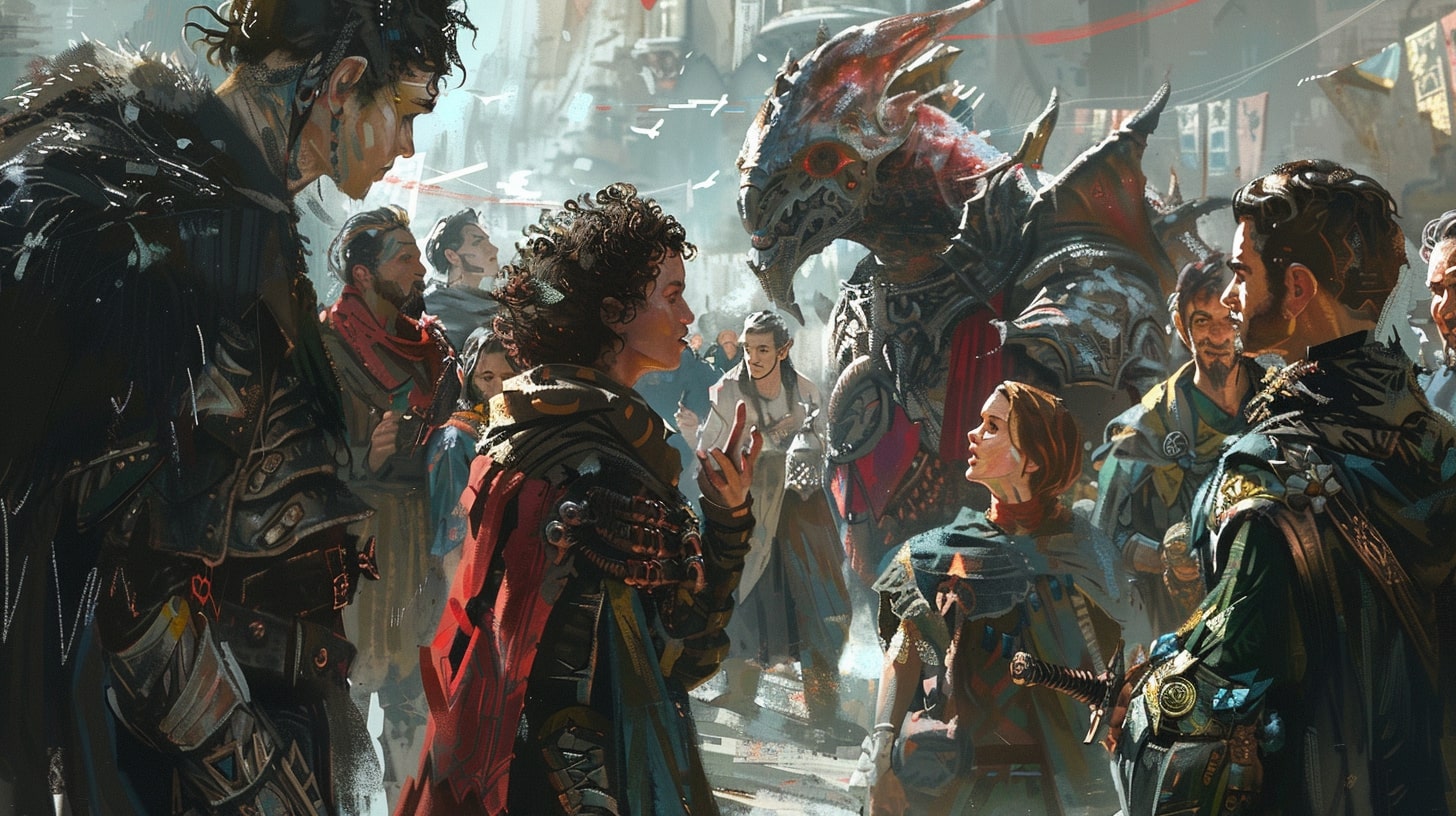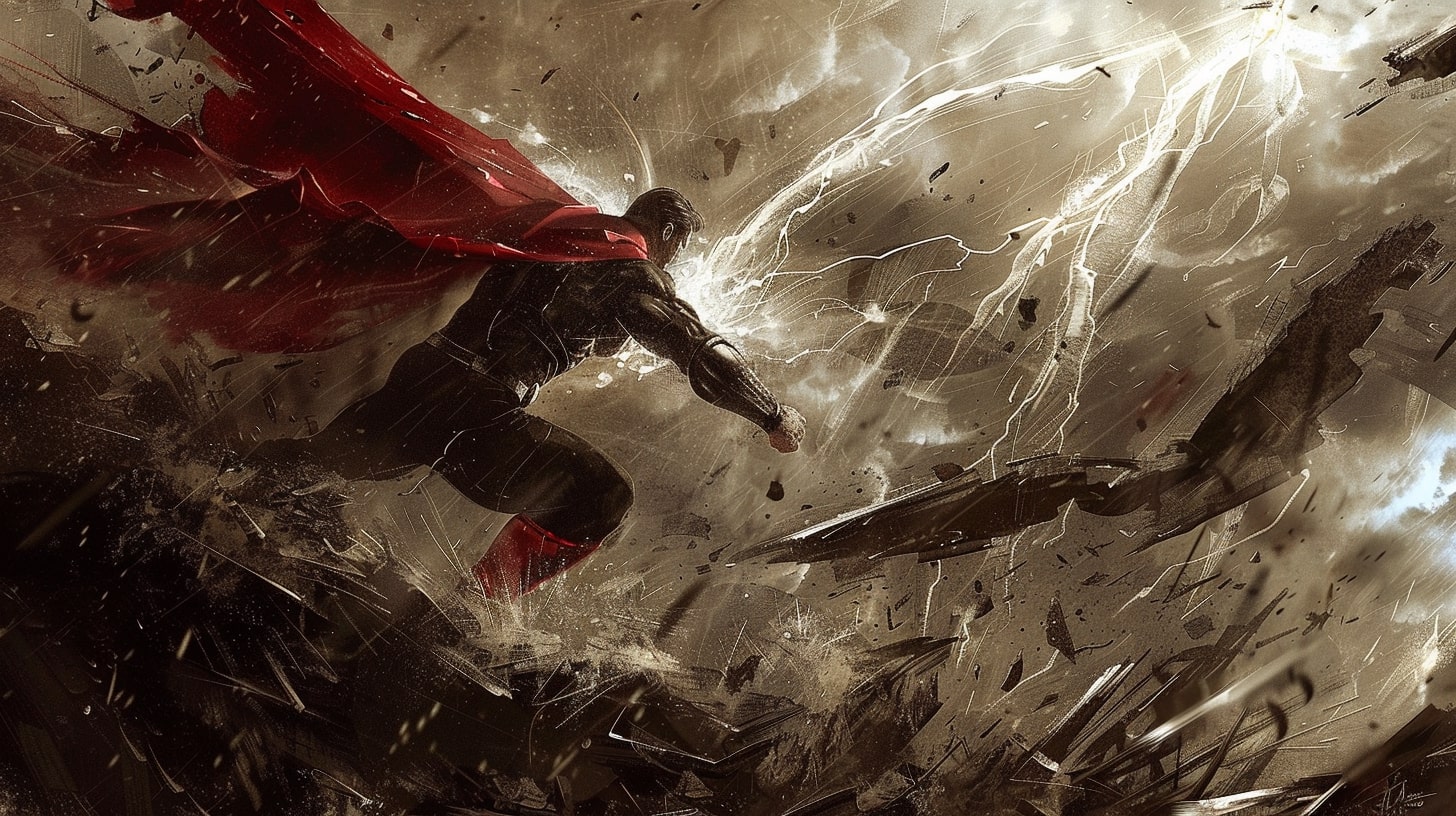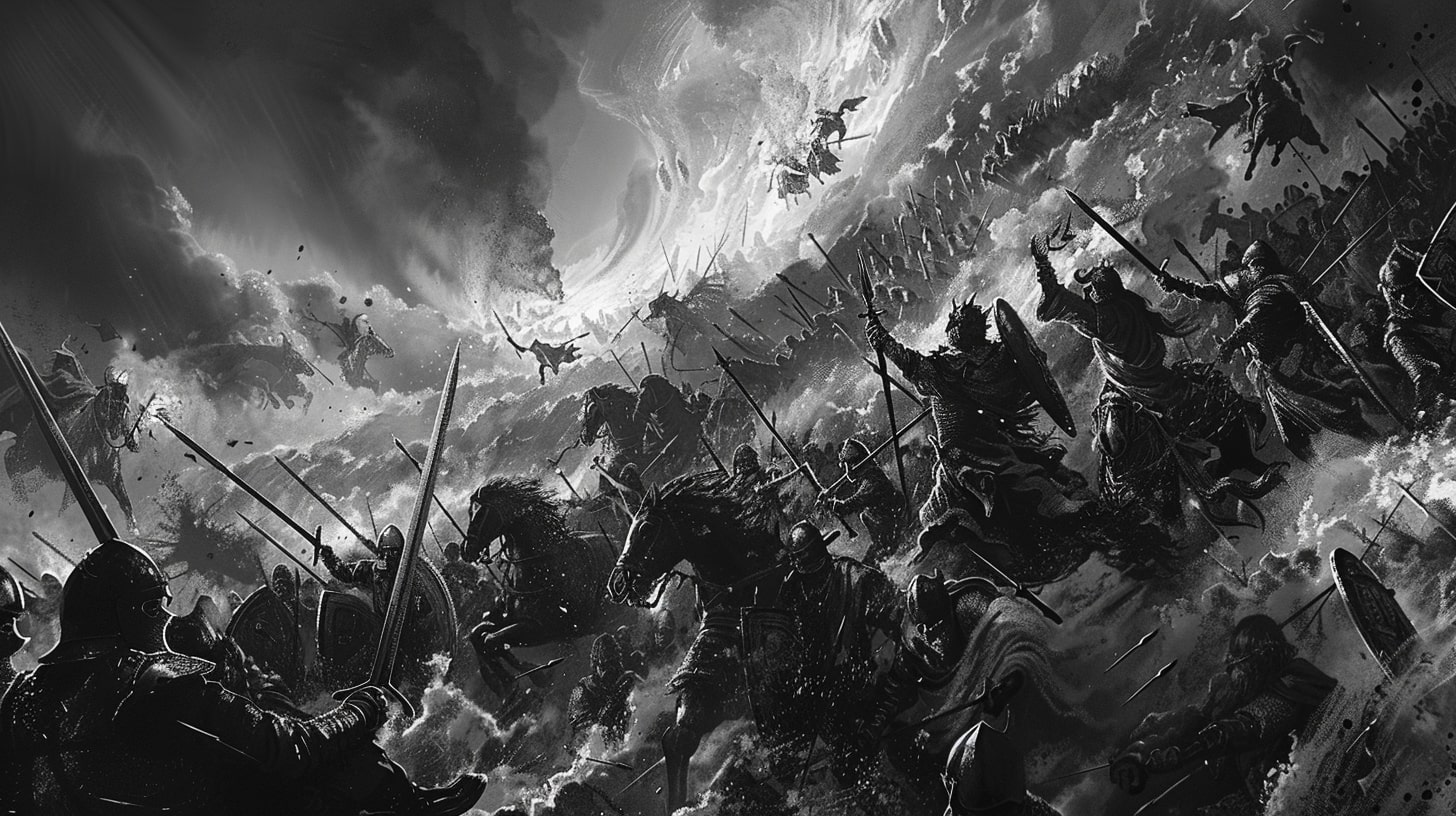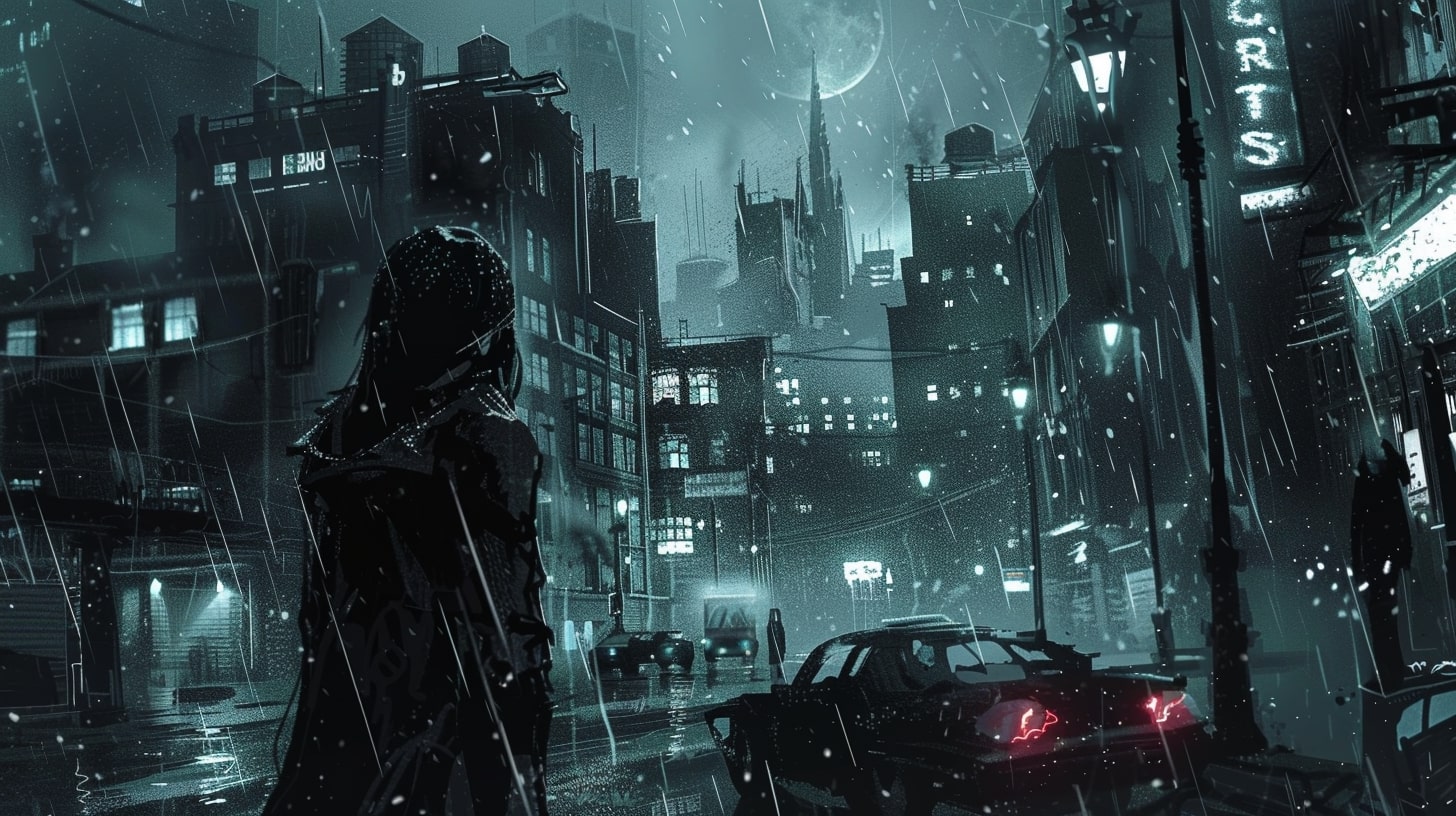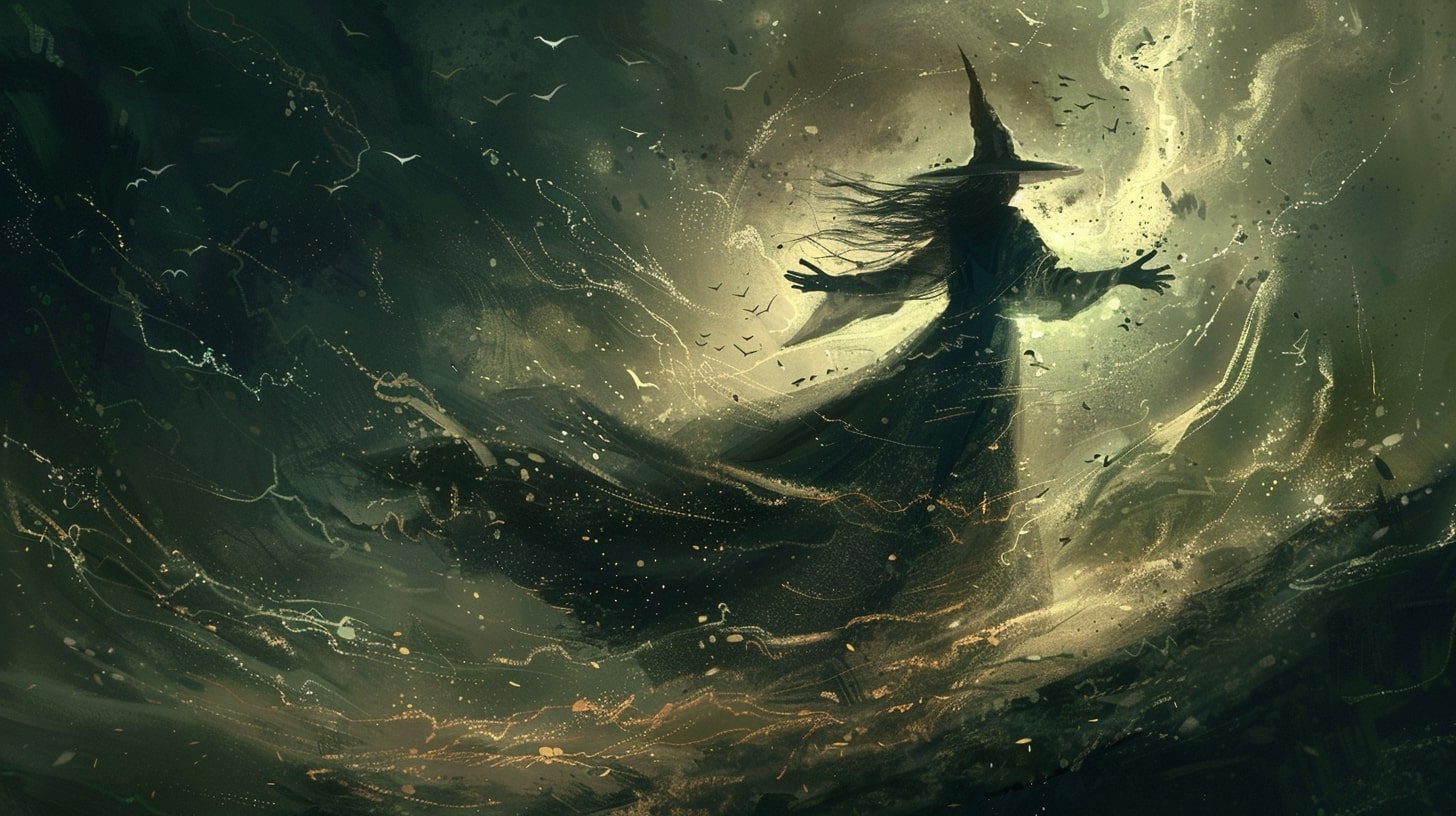The Power of Outlining
In the realm of fantasy writing, outlining is an essential tool that can greatly enhance your storytelling process. By creating a well-structured outline for your fantasy novel, you lay the foundation for a captivating and cohesive story.
But what goes into outlining a fantasy novel? It doesn’t have to be as complicated as you think.
Let’s explore why outlining is crucial for fantasy novels and the benefits it brings to your writing journey.
Why Outlining is Essential for Fantasy Novels
When it comes to the intricate and imaginative world-building of fantasy novels, outlining plays a vital role in ensuring the success of your story. By outlining your novel, you gain a clear roadmap of the plot, characters, and settings, allowing you to maintain consistency and avoid plot holes.
This is especially important in the fantasy genre, where intricate plotlines, magical systems, and fantastical elements are often intertwined.
Outlining also helps you keep track of the complexities and interconnectedness of your fantasy world. It enables you to weave together subplots, foreshadow events, and develop multi-dimensional characters.
With a well-crafted outline, you can effectively manage the pacing of your story, ensuring that each element falls into place and engages your readers.
Benefits of Outlining a Fantasy Novel
The benefits of outlining your fantasy novel are numerous, and they extend beyond just organization. Here are some advantages that outlining brings to your writing process:
Structured Storytelling: Outlining provides a framework for your story, helping you maintain a logical progression of events. This structure allows you to build tension, create plot twists, and deliver a satisfying conclusion.
Efficient Writing: With a solid outline, you can write more efficiently. You have a clear direction, which minimizes writer’s block and reduces the time spent on revisions. You can focus on crafting engaging scenes and developing your characters with confidence.
Consistency and Cohesion: An outline ensures consistency in your world-building, character development, and plot. It helps you avoid contradictions and ensures that all elements align seamlessly throughout your novel.
Conflict and Tension: Outlining allows you to strategically place conflicts and build tension at key points in your story. By structuring your plot arcs, you can create a captivating narrative that keeps readers turning the pages.
Identifying and Resolving Issues: During the outlining process, you may identify potential issues or gaps in your story. This early recognition enables you to address them before investing significant time in writing, saving you from major rewrites later on.
Improved Focus: Outlining helps you stay focused on the core elements of your story, preventing digressions or unnecessary tangents. It keeps you on track and ensures that every scene serves a purpose in advancing the plot or developing the characters.
By dedicating time to outlining your fantasy novel, you set yourself up for success. It allows you to unleash your creativity within a structured framework, resulting in a well-crafted and immersive story.
Are you ready to embark on your outlining journey? Let’s dive into the step-by-step process of outlining your fantasy novel and bring your imagination to life!
Next, we will explore Step 1: Define Your Story Idea and discuss the importance of choosing a fantasy genre and developing a unique concept for your novel. Stay tuned!

Step 1: Define Your Story Idea
Before diving into outlining your fantasy novel, it’s important to define your story idea. This involves choosing a fantasy genre and developing a unique concept that will set your novel apart.
Choosing a Fantasy Genre
When selecting a fantasy genre for your novel, consider the different sub-genres and find one that resonates with you and your story idea. Some popular fantasy genres include:
- High fantasy: Set in a fictional world with its own rules, magic, and often featuring epic quests.
- Urban fantasy: Blends fantasy elements with contemporary settings, often taking place in cities.
- Dark fantasy: Explores darker themes, incorporating elements of horror and the supernatural.
- Historical fantasy: Combines historical settings with fantastical elements.
- Epic fantasy: Epic in scope, featuring grand adventures, multiple storylines, and complex world-building.
- Steampunk: Blends Victorian aesthetics with advanced technology, often set in an alternate history.
- Cyberpunk: Focuses on a dystopian future where advanced technology intersects with societal issues.
By choosing a specific fantasy genre, you can establish the foundation for your story and cater your world-building, characters, and plot accordingly. For more information on various fantasy genres, visit our article on how to write fantasy novels.
Developing a Unique Concept
To make your fantasy novel stand out, it’s crucial to develop a unique concept. Consider what sets your story apart from others in the genre. Here are some ideas to spark your creativity:
Unconventional magic system: Create a new and innovative magic system that hasn’t been explored before. Check out our article on creating a fantasy magic system for inspiration.
Unique creatures or races: Introduce fantastical creatures or races that are not commonly seen in fantasy novels. Dive into our article on crafting fantasy creatures for guidance.
Inventive world-building: Build a fantasy world with its own rules and intricacies. Consider creating a detailed map to visualize your world. Our article on creating a fantasy world can provide useful tips.
Twists on familiar tropes: Put a fresh spin on familiar fantasy tropes to surprise and engage readers. Experiment with unique character arcs, plot twists, or unconventional quests.
By developing a unique concept, you’ll captivate readers and make your novel a memorable addition to the fantasy genre. Remember to stay true to your own voice and vision throughout the outlining process.

Step 2: Create Your World
To bring your fantasy novel to life, it’s important to create a vivid and believable fantasy world. This step involves building a world that captivates your readers and immerses them in a realm of magic, adventure, and wonder. Here are two essential aspects to consider when crafting your fantasy world: building a believable fantasy world and mapping your world.
Building a Believable Fantasy World
When creating your fantasy world, it’s essential to establish a sense of realism and coherence. Even though your world may be filled with fantastical elements, it should still adhere to its own set of rules and internal logic. This helps readers suspend their disbelief and become fully engaged in your story.
Consider the following elements when building your fantasy world:
Geography and Landscapes: Determine the geography of your world, including continents, mountains, forests, and bodies of water. Think about how these landscapes impact the climate, ecosystems, and the lives of your characters.
Culture and Society: Develop the social structures, customs, and traditions of different societies within your world. Consider their beliefs, values, and how they interact with each other.
Magic and Supernatural Elements: If your world includes magic or supernatural elements, establish clear rules and limitations to maintain consistency. Create a magic system that fits seamlessly into the fabric of your world.
History and Lore: Craft a rich history for your world. Think about past events, legends, and myths that shape the present. This adds depth and complexity to your world and provides opportunities for storytelling.
Remember to consider the interplay between these elements, ensuring they are integrated harmoniously to create a realistic and immersive setting. For more tips on world-building, check out our article on creating a fantasy world.
Mapping Your World
Mapping your fantasy world provides a visual representation of its geography and allows you to better navigate and describe its various locations. A map can serve as a helpful reference tool as you develop your story and plot.
Consider the following when mapping your world:
Continents and Regions: Determine the continents and major regions within your world. Sketch their shapes and relative positions.
Landmarks and Points of Interest: Identify significant landmarks, such as mountains, rivers, forests, and cities. Mark their locations on your map.
Travel Routes: Plot travel routes, including roads, rivers, and other means of transportation. Consider how characters move through your world and the challenges they may face.
Scale and Proportions: Maintain a consistent scale and proportions to ensure accuracy and realism in your map.
Creating a detailed and visually appealing map not only helps you as the writer, but it also adds depth and authenticity to your story. It allows readers to follow your characters’ journeys and enhances their understanding and connection to your world.
By focusing on building a believable fantasy world and mapping it out, you lay the foundation for a captivating and immersive reading experience. In the next step, we will delve into developing your characters and breathing life into your fantasy world.

Step 3: Developing Your Characters
In order to bring your fantasy novel to life, it’s essential to craft memorable protagonists and create compelling antagonists. These characters will drive the narrative and engage your readers throughout the story.
Crafting Memorable Protagonists
Your protagonist is the main character who will capture the readers’ attention and guide them through the fantastical world you’ve created. To craft a memorable protagonist, consider the following:
Motivation and Goals: What drives your protagonist? What are their goals and desires? Understanding their motivations will shape their actions and decisions throughout the story.
Strengths and Flaws: Give your protagonist both strengths and flaws to make them relatable and realistic. Flaws create opportunities for growth and challenges for your protagonist to overcome.
Backstory and Personality: Develop a rich backstory that influences your protagonist’s personality and informs their actions. This will add depth and complexity to their character.
Unique Qualities: Infuse your protagonist with unique qualities that set them apart from other characters. This could be a special skill, a distinct personality trait, or a compelling backstory.
Character Arc: Consider how your protagonist will evolve and change over the course of the story. A well-crafted character arc adds depth and engages readers on an emotional level.
Remember to create characters that resonate with your readers and elicit an emotional response. For more tips on developing your fantasy characters, check out our article on developing fantasy characters.
Creating Compelling Antagonists
A compelling antagonist is essential for creating conflict and tension in your fantasy novel. They provide the obstacles and challenges that your protagonist must overcome. When creating your antagonist, keep the following in mind:
Motivation and Goals: Just like your protagonist, your antagonist should have clear motivations and goals. Explore their reasons for opposing the protagonist and what they hope to achieve.
Complexity and Sympathy: Avoid creating one-dimensional villains. Give your antagonist complexity and depth by exploring their backstory, vulnerabilities, and the events that have shaped them. This can create sympathy or empathy in the readers.
Conflict with the Protagonist: Consider how your antagonist’s goals and motivations directly conflict with those of your protagonist. This will create tension and drive the story forward.
Strengths and Weaknesses: Give your antagonist strengths and weaknesses that make them formidable opponents for your protagonist. This will make the conflicts and confrontations between them more compelling.
Character Arc: While not all antagonists require a character arc, consider whether there is room for growth or change in your antagonist. This can add complexity to their character and surprise readers.
By crafting memorable protagonists and creating compelling antagonists, you’ll create a dynamic interplay of characters that will captivate your readers. These characters will drive the plot forward and make your fantasy world come alive.

Step 4: Plotting Your Story
Now that you have a solid foundation for your fantasy novel, it’s time to delve into the plot. The plot is the driving force of your story, and it’s what keeps readers engaged from beginning to end. In this step, we’ll focus on establishing the main conflict and outlining the story arc.
Establishing the Main Conflict
Every compelling story needs a central conflict that drives the plot forward. The main conflict is the primary challenge or obstacle that your protagonist must overcome. It creates tension, raises stakes, and keeps readers invested in the story.
To establish the main conflict, ask yourself questions such as:
- What is the main goal or desire of the protagonist?
- What is preventing the protagonist from achieving their goal?
- Who or what is opposing the protagonist?
The main conflict can take various forms in fantasy novels. It could be a battle between good and evil, a quest to save the world, or a personal struggle for self-discovery. Whatever form it takes, ensure that the conflict is clear, compelling, and drives the narrative forward.
Outlining the Story Arc
The story arc refers to the progression of the narrative from beginning to end. It encompasses the rising action, climax, and resolution of your story. Outlining the story arc helps you organize your plot points and ensures a cohesive and satisfying reading experience.
Here are the key components of a typical story arc:
- Introduction: Introduce the protagonist, establish the setting, and set the stage for the main conflict.
- Rising Action: Build tension and develop the plot through a series of events, challenges, and character interactions.
- Climax: The turning point of the story where the main conflict reaches its peak. This is the most intense and pivotal moment.
- Falling Action: Explore the consequences of the climax and begin to tie up loose ends.
- Resolution: The final resolution of the main conflict. Provide closure and wrap up any remaining storylines.
As you outline your story arc, consider the pacing and flow of your narrative. Be mindful of balancing moments of tension and suspense with quieter moments of reflection and character development. This will create a well-rounded and engaging reading experience.
Remember, the story arc is a flexible framework that you can adapt to suit your specific story. Feel free to experiment with different structures and variations to find what works best for your fantasy novel.
In the next step, we’ll focus on building the chapters and organizing your plot points into a cohesive structure. Stay tuned!
Step 5: Building the Chapters
Now that you have a solid plot outline, it’s time to dive into building the individual chapters of your fantasy novel. This step is crucial for developing the pacing and ensuring a cohesive flow throughout your story. In this section, we will explore two key aspects: identifying key plot points and structuring chapter breaks.
Identifying Key Plot Points
To create engaging chapters, it’s essential to identify the key plot points that will drive your story forward. These plot points are pivotal moments that advance the main conflict or reveal important information to the reader. They keep the readers hooked and eager to continue reading.
Start by reviewing your plot outline and pinpointing the significant events or turning points that occur throughout your story. These plot points can include the introduction of a new character, a major revelation, a climax, or a resolution. By strategically placing these plot points within your chapters, you can maintain a sense of tension and excitement.
Consider using a table to organize your plot points. List the chapter numbers, the key plot points within each chapter, and a brief description of what happens. This table will serve as a helpful reference as you write and revise your novel.
| Chapter | Key Plot Points |
|---|---|
| 1 | Introduce protagonist, establish the ordinary world |
| 2 | Inciting incident, introduce main conflict |
| 3 | Protagonist faces initial challenge |
| 4 | Mentor character provides guidance |
| 5 | First major setback for the protagonist |
| 6 | Revelation or turning point |
| 7 | Climactic battle or confrontation |
| 8 | Resolution and setup for the next chapter |
Structuring Chapter Breaks
In addition to identifying key plot points, structuring chapter breaks is an important aspect of organizing your novel. Chapter breaks provide natural stopping points for readers and help maintain a sense of rhythm and pacing.
When determining where to place chapter breaks, consider the following factors:
Scene transitions: Chapter breaks often occur at the end of a scene or when transitioning to a new location or time period. This allows for a smooth shift in perspective and keeps the reader engaged.
Emotional impact: Consider ending a chapter at a point of high tension, suspense, or emotional impact. This leaves the reader eager to find out what happens next.
Cliffhangers: Ending a chapter with a cliffhanger, where the outcome of a critical event is left unresolved, can create a sense of anticipation and urgency.
Chapter length: Aim for consistent chapter lengths throughout your novel. This helps establish a rhythm and allows readers to anticipate the length of each reading session.
Remember, chapter breaks should serve a purpose and contribute to the overall structure of your story. By thoughtfully structuring your chapters, you can create a compelling narrative that keeps readers invested in your fantasy world.
In the next step, we will explore the importance of developing subplots and side characters to add depth and complexity to your fantasy novel. Stay tuned!
Step 6: Filling in the Details
Congratulations on reaching Step 6 of outlining your fantasy novel! This step is all about filling in the details of your story, adding depth and richness to your world and characters.
Let’s explore two important aspects of this step: developing subplots and side characters and adding depth with descriptions and dialogue.
Developing Subplots and Side Characters
Subplots and side characters are essential elements that add complexity and intrigue to your fantasy novel. They provide additional layers of storytelling and help to keep readers engaged throughout the journey.
Consider incorporating subplots that intertwine with the main plot, adding depth and complexity to your story.
To develop subplots, ask yourself what secondary storylines or conflicts could arise in your fantasy world. These subplots can involve supporting characters who have their own goals, challenges, and relationships.
They can also explore different aspects of your fantasy world, such as political intrigue, personal quests, or hidden mysteries.
When creating side characters, aim to make them memorable and unique. Each character should have their own distinct personality, motivations, and character arc.
They can serve different roles in the story, such as mentors, allies, or adversaries to the main characters. By fleshing out these side characters, you can create a diverse and engaging cast that complements the main narrative.
Adding Depth with Descriptions and Dialogue
Descriptions and dialogue play a crucial role in immersing readers in your fantasy world. Descriptive language brings your settings, creatures, and magical elements to life, allowing readers to visualize the scenes in their minds.
Be vivid and imaginative with your descriptions, using sensory details to create a rich and immersive experience.
When writing dialogue, strive to make it authentic and true to each character’s voice. Dialogue can reveal personalities, relationships, and conflicts. It should be engaging, purposeful, and move the story forward.
Consider the unique speech patterns, vocabulary, and mannerisms of each character to make their dialogue distinct.
Remember to strike a balance between descriptions and dialogue. Too much description can slow down the pacing, while too much dialogue may make the story feel disjointed. Find the right blend to maintain a smooth flow and keep readers captivated.
By developing subplots and side characters, and adding depth with descriptions and dialogue, you can elevate your fantasy novel to new heights. These details will enrich your story, captivate readers, and make your fantasy world come alive.
In the next step, we will delve into the crucial process of revising and refining your outline, ensuring that your fantasy novel is polished and ready for the writing journey ahead. Stay tuned!
Continue the adventure by checking out our article on writing fantasy dialogue for tips and techniques to create authentic and captivating conversations in your fantasy novel. And if you want to explore more resources on fantasy writing, visit our how to write fantasy novels guide.
Keep up the great work, and let your imagination soar as you craft your fantastical tale!
Step 7: Revising and Refining
Congratulations! You’ve made it to the final step of outlining your fantasy novel. Now it’s time to review and edit your outline, making any necessary adjustments and improvements to ensure your story is well-structured and cohesive.
Reviewing and Editing Your Outline
Take a careful look at your outline and evaluate each section and chapter. Consider the flow of your story, the pacing of the plot, and the development of your characters. Look for any inconsistencies, plot holes, or areas that need further clarification or expansion.
During the review process, ask yourself the following questions:
- Does the outline effectively convey the main conflict and the journey of your protagonist?
- Are the major plot points and key events logically connected and engaging?
- Are there any gaps in the story that need to be addressed or filled in?
- Do the subplots and side characters enhance the main plot, adding depth and complexity to the narrative?
As you review your outline, make notes of any changes or improvements you want to make. This may involve reordering chapters, rewriting scenes, or adding new elements to enhance the overall story. Remember, the outline serves as a roadmap, providing you with a clear direction for your writing journey.
Making Adjustments and Improvements
Once you have completed the review process, it’s time to make the necessary adjustments and improvements to your outline. This may involve:
- Refining the plot: Make sure all plot points are clear and well-developed. Strengthen the main conflict and ensure that each chapter contributes to the overall narrative.
- Enhancing the characters: Take a closer look at your protagonist and antagonist. Are they well-rounded and compelling? Develop their personalities, motivations, and character arcs. Consider the relationships between your characters and how they drive the story forward.
- Polishing the structure: Check the chapter breaks and ensure they are strategically placed to create tension and maintain reader engagement. Consider the pacing of your story and adjust the length and intensity of chapters as needed.
- Adding depth: Look for opportunities to add more depth to your story through descriptions, dialogue, and world-building elements. Consider incorporating sensory details, vivid imagery, and unique language to immerse readers in your fantasy world.
Remember, the outlining process is not set in stone. It’s a flexible tool that allows you to refine and shape your novel as you go along. Don’t hesitate to make changes and adjustments as you see fit.
Now that you have completed the outlining process, you are well-prepared to embark on your writing journey. Armed with a well-structured outline, you have a solid foundation for your fantasy novel. So go ahead, let your imagination soar and bring your magical world to life! Good luck!
If you’re looking for more writing tips and inspiration, check out our articles on fantasy writing tips and how to write fantasy novels. Happy writing!











